Forget fussy flower beds and endless weeding—wildflowers know how to take care of themselves. These untamed beauties thrive with little effort, bringing color, pollinators, and life to your garden without demanding constant attention.
No meticulous pruning, no complicated care—just plant, sit back, and let nature do the rest. Wildflowers adapt to their environment, growing strong in poor soil, resisting drought, and blooming year after year with barely a helping hand.
Whether you want a burst of spring color, a summer meadow, or a garden buzzing with bees and butterflies, these flowers do all the work for you. Just scatter the seeds and watch the magic happen.
Here are 28 wildflowers that make low-maintenance gardening effortless—because the best gardens are the ones that grow wild and free.
Purple Coneflower
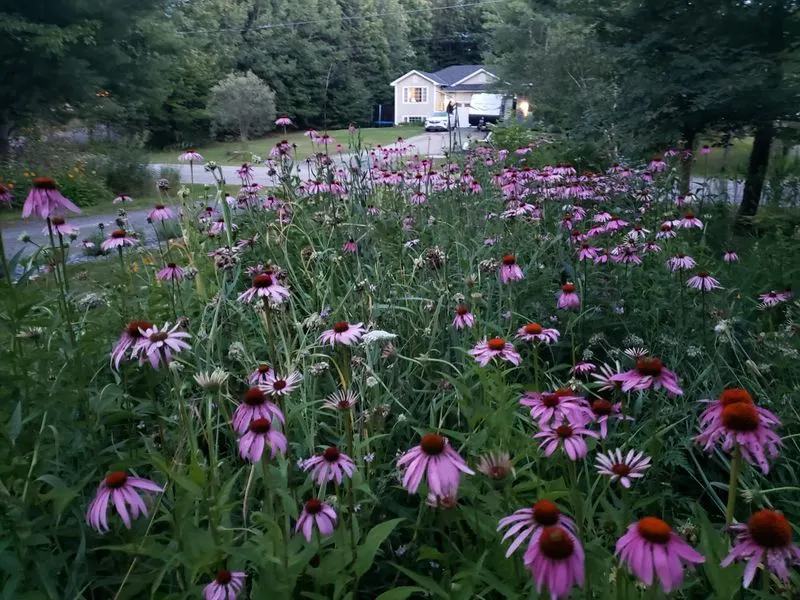
Purple coneflowers don’t just grow; they command attention. With spiky, regal petals circling a burnt orange crown, this flower’s allure is magnetic. Hardy and self-sufficient, it thrives on neglect, sipping sun and rain in balanced doses.
Legend has it, Echinacea, as it’s known, was revered by Native Americans for its healing powers. This wildflower attracts not just admirers but also bustling bees and fluttering butterflies, turning gardens into vibrant ecosystems.
A true symbol of resilience, the purple coneflower laughs in the face of drought, dancing defiantly under the summer sun.
California Poppy
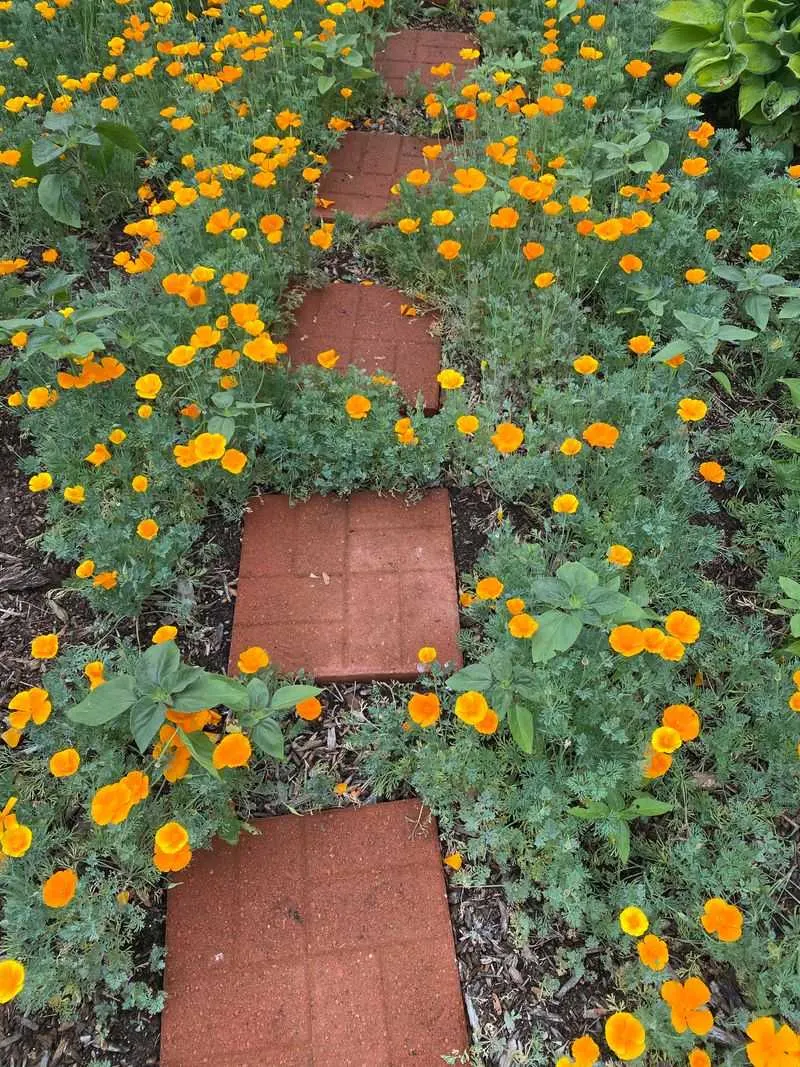
California poppies, with their golden hue, don’t just bloom—they explode across fields like liquid sunshine. Their silky petals catch the light, radiating warmth and joy.
This state flower of California is a pioneer of arid landscapes, needing little more than sandy soil and sunlight to flourish. Its roots dig deep, anchoring it through fierce winds.
In the language of flowers, poppies symbolize dreams and imagination, painting meadows with an artist’s touch. Growing them feels like inviting pure, unfiltered happiness into your garden, a splash of gold against the mundane.
Black-eyed Susan
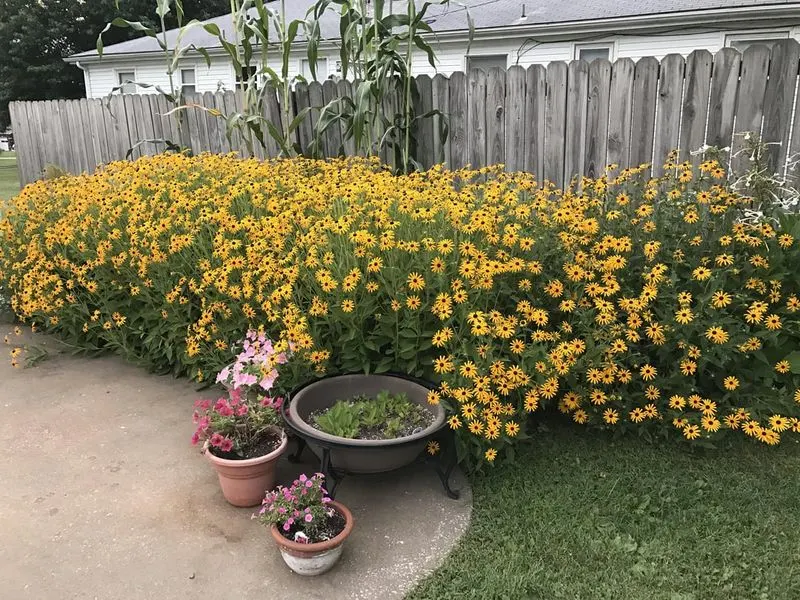
Black-eyed Susans are the sunflowers’ playful cousins, their bright yellow petals fanning out like rays around a dark, brooding center. They’re carefree, thriving in fields where others falter.
These wildflowers embody the spirit of summer, attracting pollinators with their cheerful demeanor. Native to North America, they’re as tough as they are beautiful, surviving droughts and poor soils with aplomb.
Historically, they’ve symbolized justice and encouragement, standing tall and vibrant against the odds. Each bloom is a promise of bright tomorrows, whispering of hope and resilience.
Bluebell
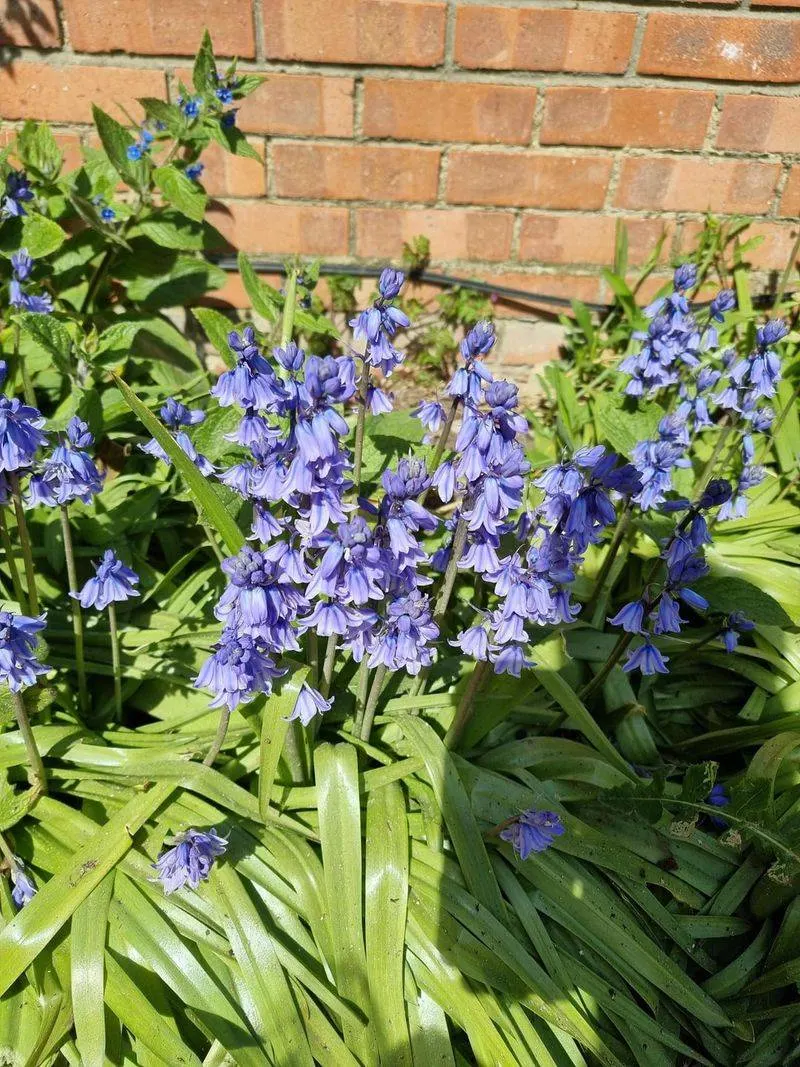
Bluebells, with their nodding heads, are the gentle heralds of spring. Their soft, bell-shaped flowers blanket forest floors in a sea of blue, enchanting all who wander through.
In folklore, bluebells are the flowers of the fairies, with a single ring summoning magical beings. They thrive in shaded, wooded areas, requiring little more than damp earth and dappled sunlight.
A symbol of humility and gratitude, bluebells remind us of nature’s quiet beauty. Cultivating them is like harboring a slice of enchanted forest, where serenity and magic intertwine.
Wild Bergamot
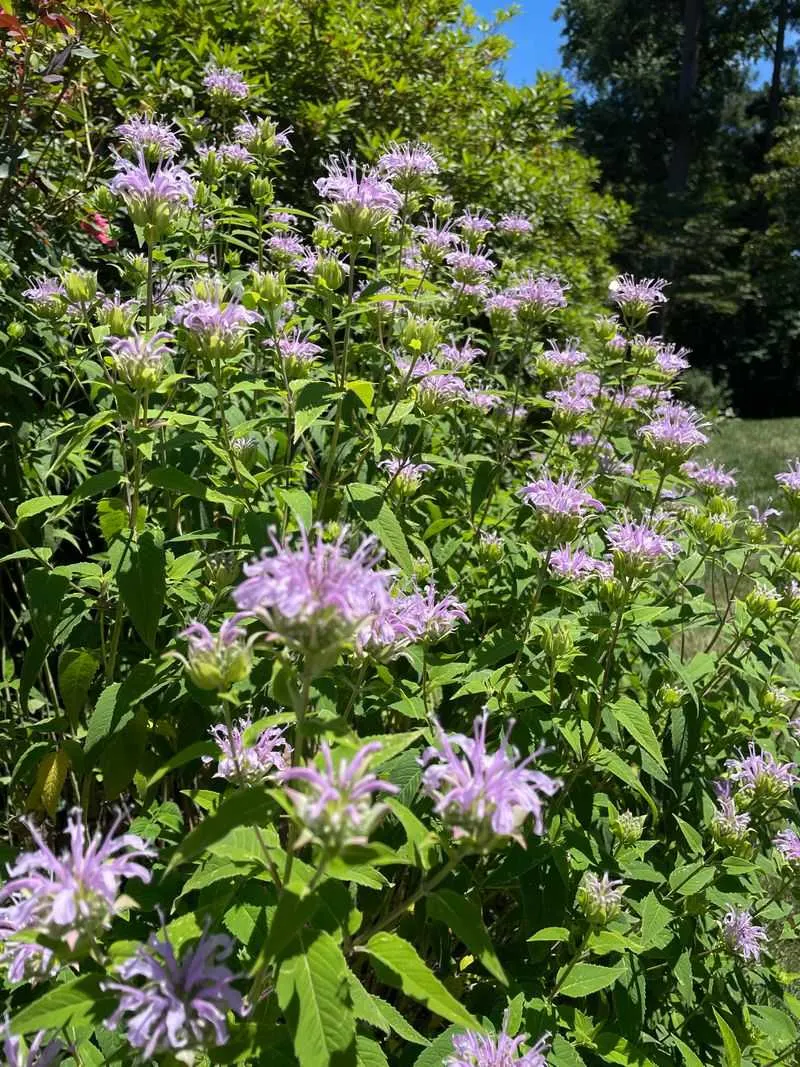
Wild bergamot, with its frizzy lavender flowers, is a burst of untamed elegance. Each bloom is a beacon for bees and butterflies, buzzing and fluttering in a nectar-fueled frenzy.
Also known as bee balm, this wildflower is a powerhouse of herbal remedies, historically used by Native Americans to soothe ailments. Its leaves offer a hint of citrus and mint, adding intrigue to wild landscapes.
Resilient and robust, wild bergamot thrives in prairies, demanding little attention while adding wild charm to gardens. It’s a botanical symphony of beauty and utility.
Butterfly Weed
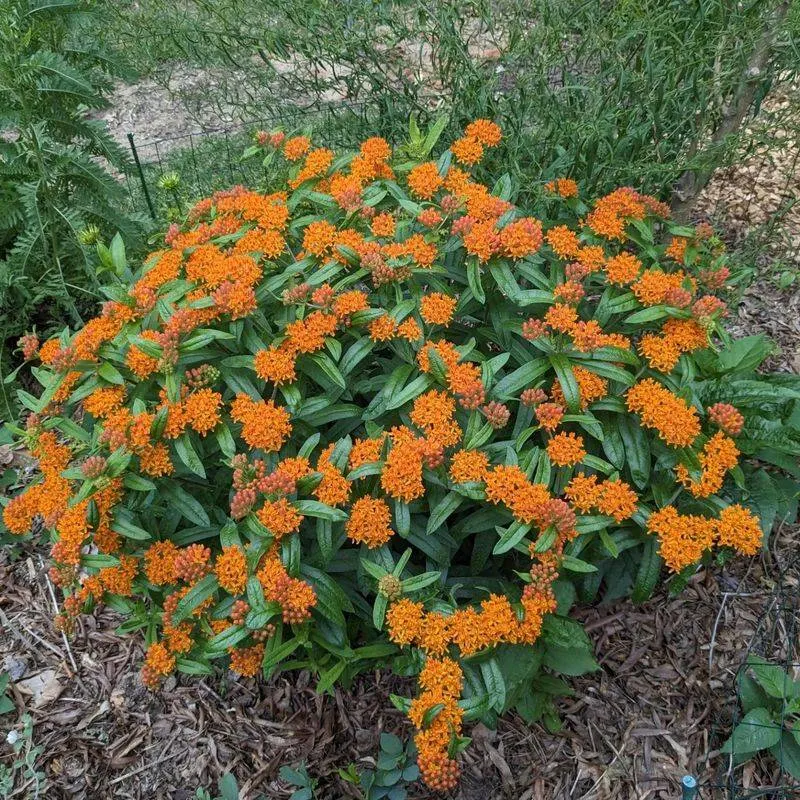
Butterfly weed is not just a plant—it’s a monarch magnet, its vivid orange blossoms calling these regal insects from miles away.
The plant’s deep roots make it drought-tolerant, thriving in the toughest conditions. Once established, it requires little care, embodying freedom and survival.
In folklore, it’s seen as a conduit for transformation and renewal, just like the butterflies it attracts. Cultivating butterfly weed is like opening a gateway to nature’s metamorphosis, inviting vibrant life into otherwise still gardens.
Oxeye Daisy
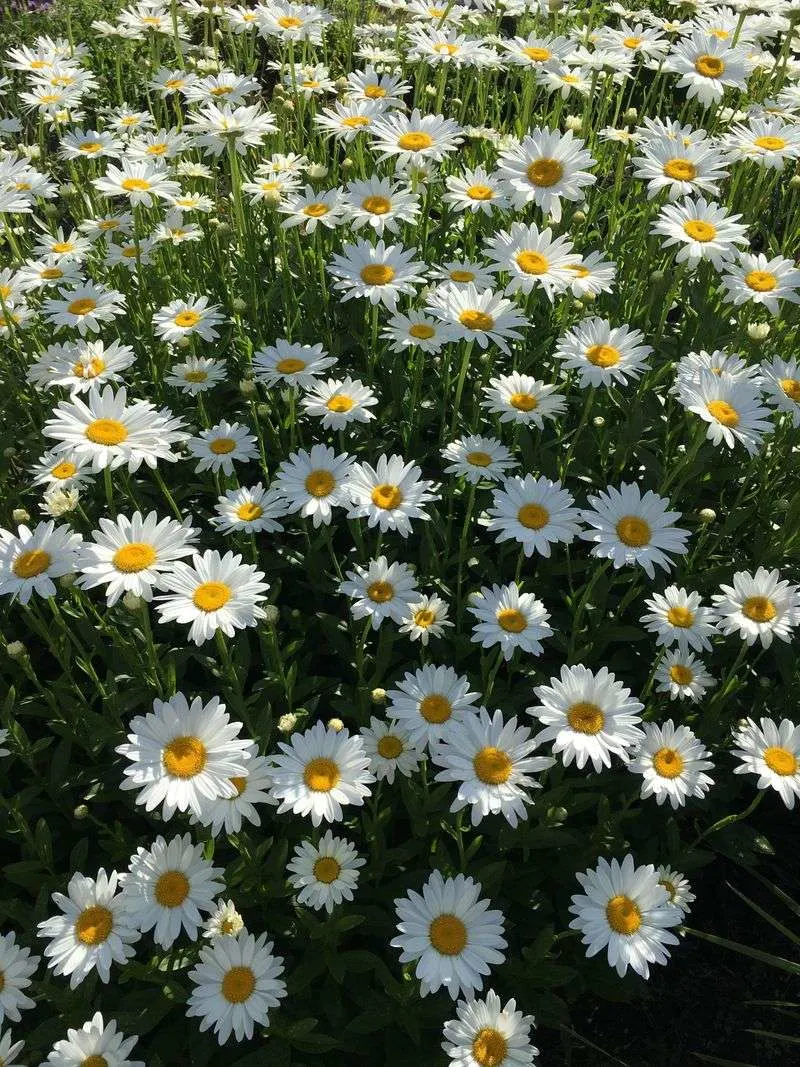
Oxeye daisies are the quintessential wildflowers, their white petals and sunny centers a vision of pastoral simplicity.
They grow with a carefree spirit, needing little more than open fields and sunshine. Often seen as symbols of innocence and purity, these daisies are the epitome of nature’s effortless beauty.
In medieval times, they were used in love divinations, each petal a question of affection. Today, they invite whimsy and carefree joy into gardens, their blooms a gentle reminder of nature’s playful side.
Lupine
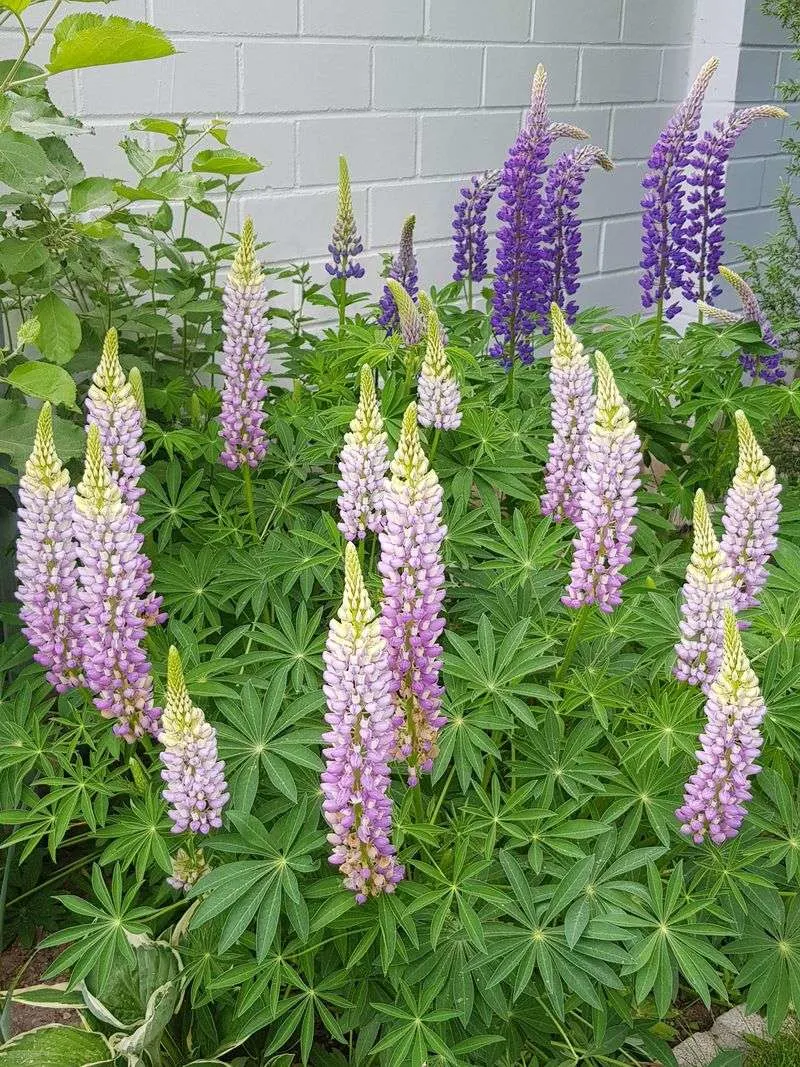
Lupines are the skyscrapers of the wildflower world, their towering spires of purple, pink, and blue commanding the landscape.
They fix nitrogen in the soil, nurturing their surroundings as they grow. Known to Native Americans as symbols of imagination and creativity, lupines bring a touch of the extraordinary to meadows.
Their blooms are a feast for bees, painting fields with vibrant energy. Cultivating lupines is like planting a splash of wild color, a testament to nature’s towering beauty and ecological harmony.
Queen Anne’s Lace
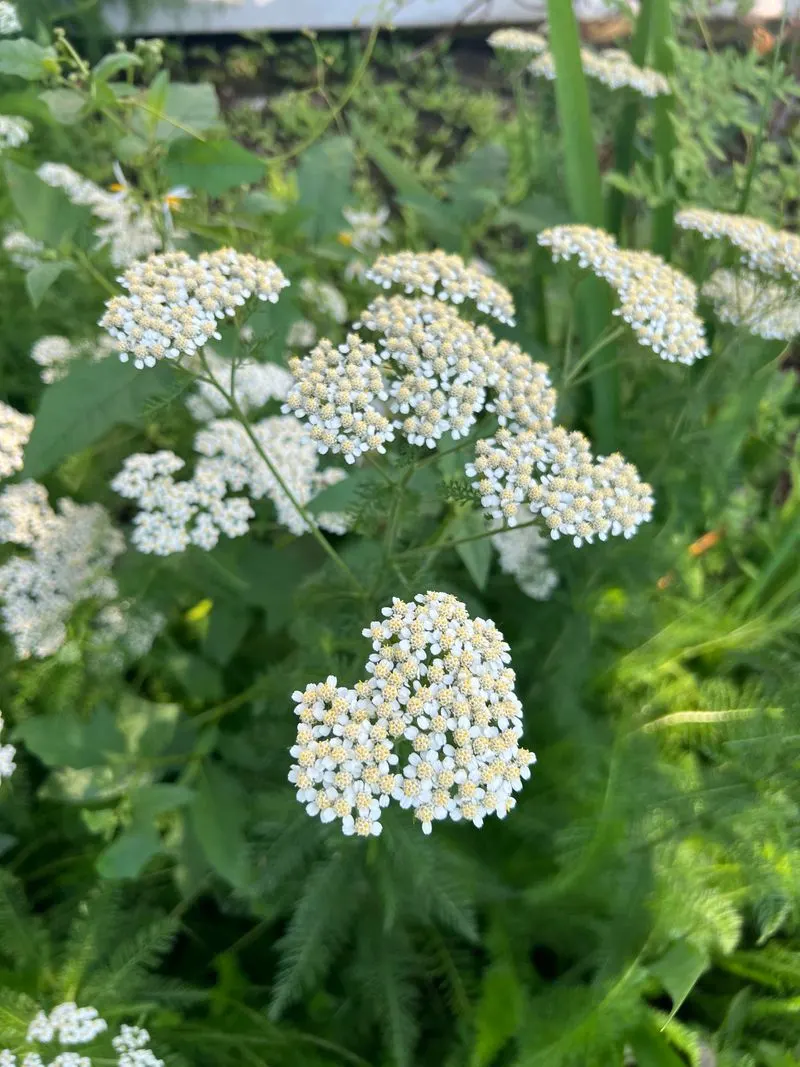
Queen Anne’s lace is the lacework of nature, its intricate white flowers resembling fine, woven doilies.
Legend tells of a queen pricking her finger, the central purple flower a drop of royal blood. This wild carrot thrives in meadows, attracting beneficial insects that dance among its blooms.
A symbol of sanctuary and refuge, Queen Anne’s lace offers shelter to small creatures. Growing it invites nature’s delicate artistry into your garden, each flower a testament to subtle elegance and resilience.
Wild Yarrow
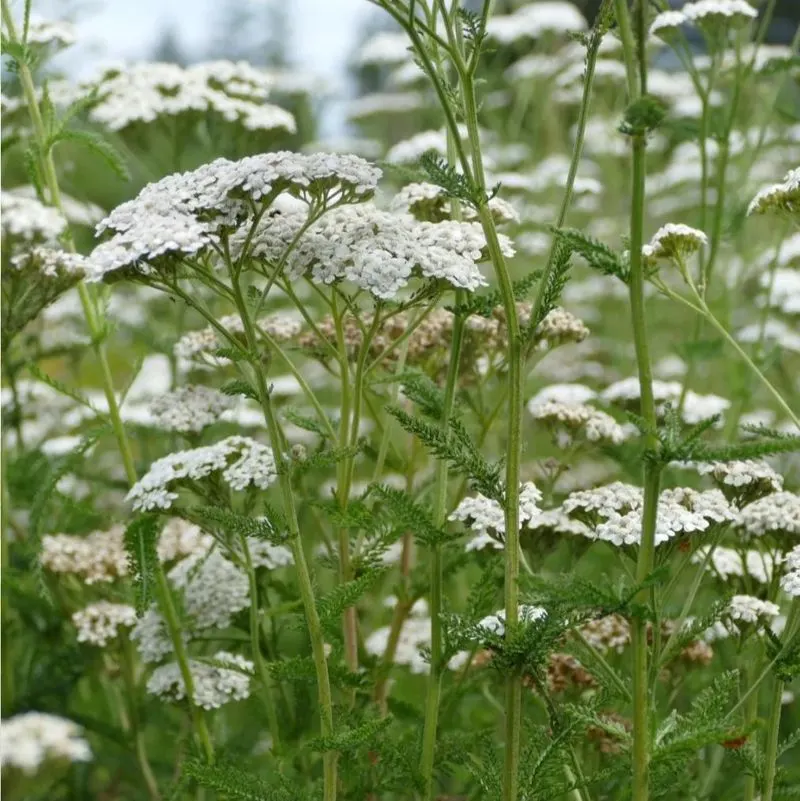
Wild yarrow stands proud and unyielding, its clusters of tiny white flowers defying the elements.
Often used in ancient herbal remedies, yarrow’s feathery foliage and steadfast blooms are a testament to nature’s resilience. It thrives on neglect, flourishing in poor soil conditions where others perish.
Symbolizing healing and protection, yarrow is a guardian of wild gardens, offering beauty and utility. Growing yarrow means embracing a legacy of ancient wisdom, where wild flowers and herbal magic intertwine.
Coreopsis
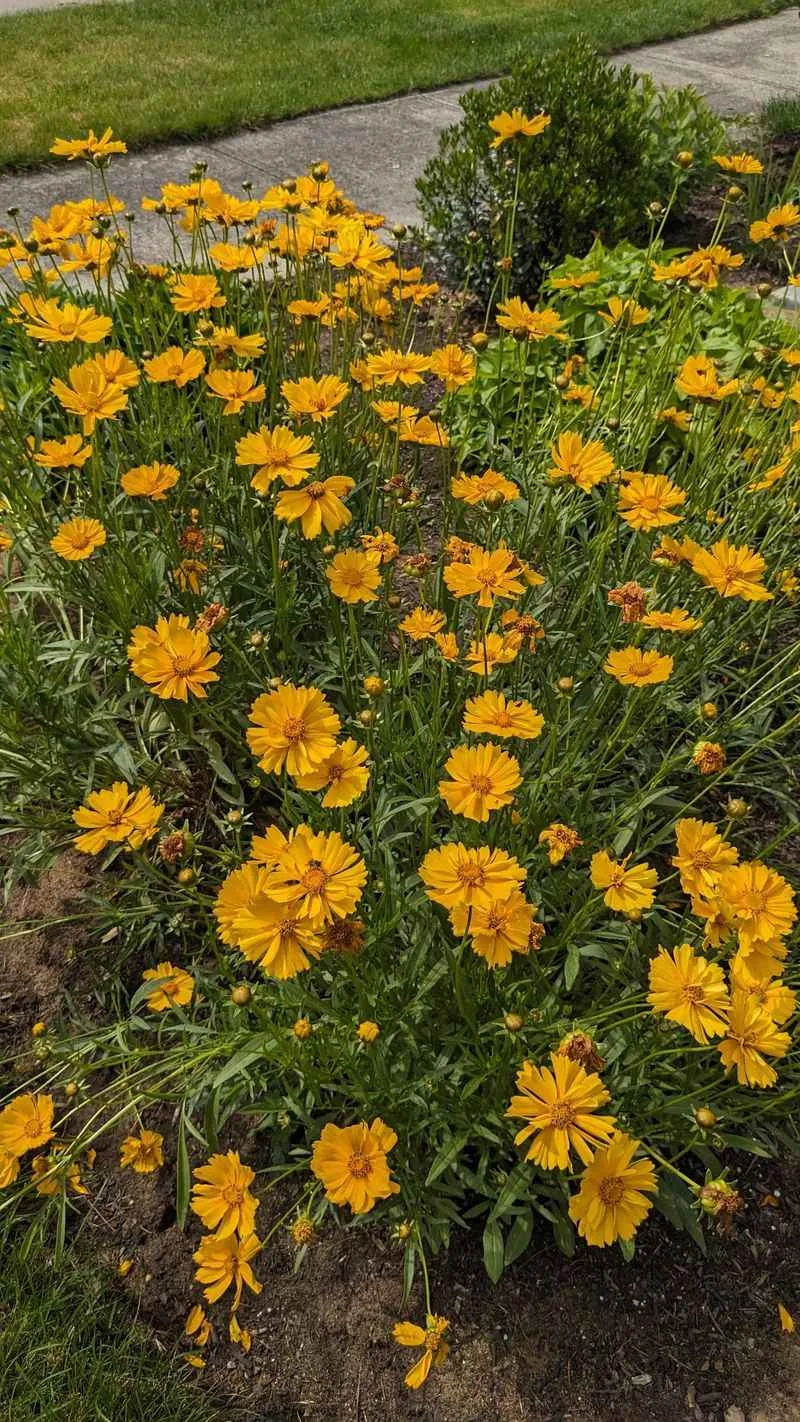
Coreopsis, with its sunny, golden blooms, dances joyfully in the breeze, turning gardens into sunlit wonders.
This wildflower thrives in less-than-ideal conditions, demanding little more than sun and well-drained soil. Known for its long blooming season, it’s a testament to enduring beauty.
In the language of flowers, coreopsis symbolizes cheer and love at first sight. Growing it is like bottling a summer’s day, where every blossom is a radiant burst of sunshine, promising warmth and joy even in the heart of nature’s chaos.
Chicory
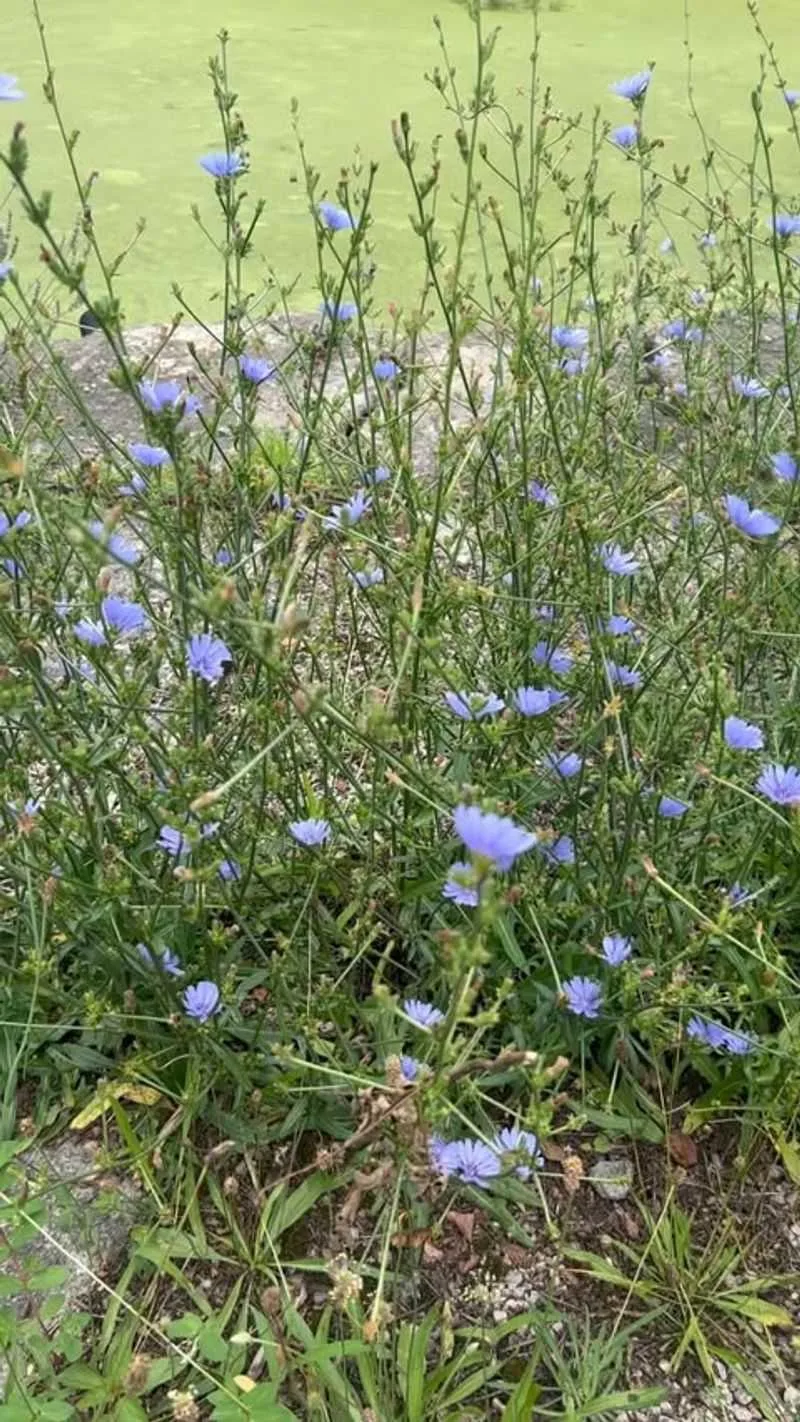
Chicory blooms like a sapphire secret, its blue flowers a testament to resilience by roadsides and fields.
This wildflower thrives in adversity, its deep roots anchoring it through storms. Historically, chicory was used as a coffee substitute, its roots roasted to a rich, earthy flavor.
A symbol of perseverance, chicory brings a bold splash of color to barren landscapes. Cultivating it is like planting a piece of sky, a reminder that beauty can thrive even in the most unexpected places.
Wild Indigo
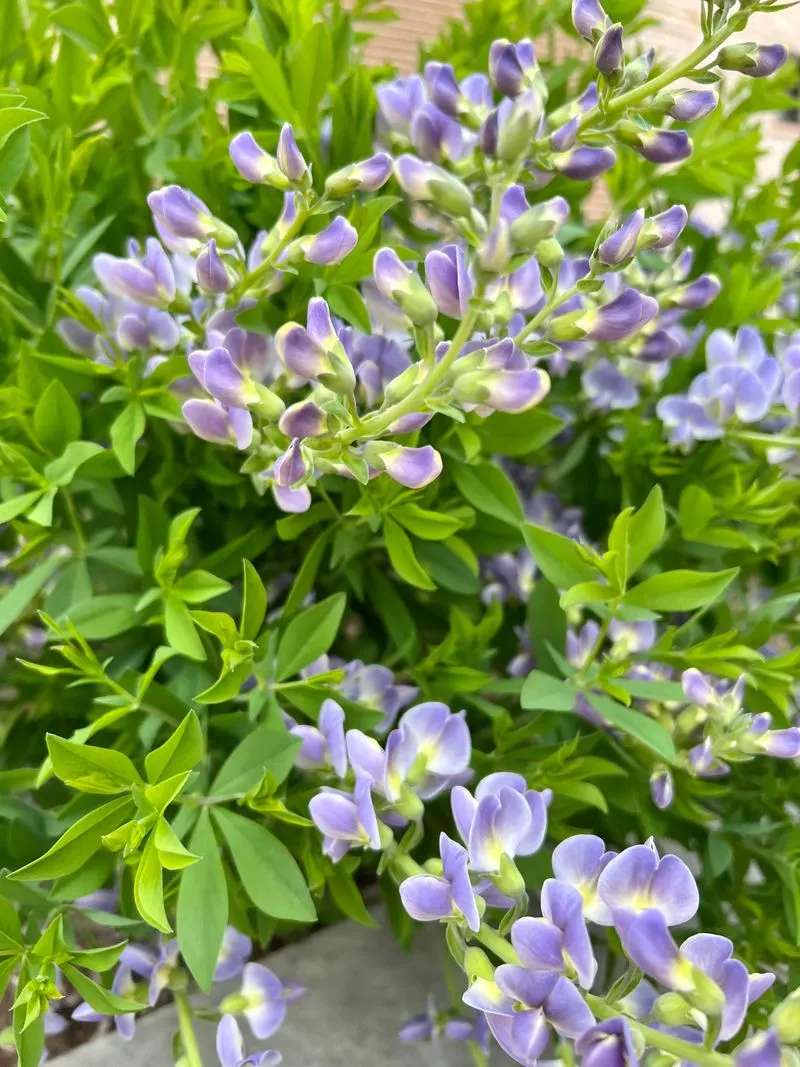
Wild indigo is nature’s dye pot, its deep blue flowers a natural marvel. Resilient and hardy, it thrives in prairies, withstanding drought and poor soils.
Native Americans used its roots to create dyes, weaving color into their lives. Wild indigo is a symbol of protection and healing, its blooms a testament to nature’s medicinal prowess.
Growing wild indigo is like embracing a piece of history, where every flower is a stroke of vibrant color on the canvas of time, blending beauty with utility.
Bee Balm
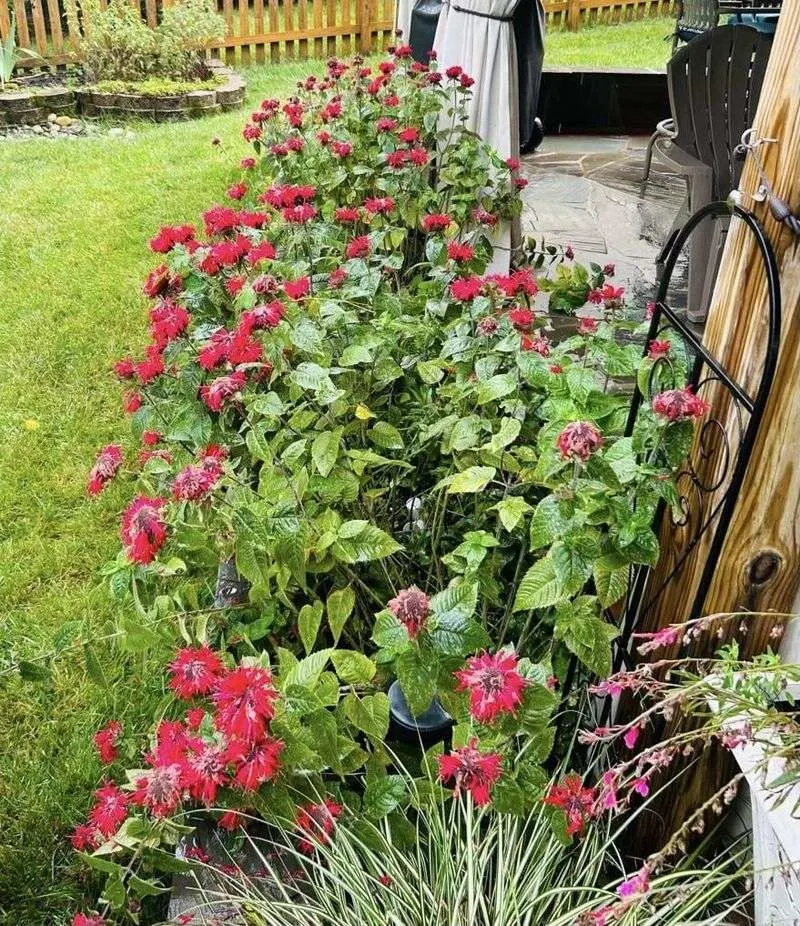
Bee balm is a wildflower with a flamboyant flair, its red blooms an irresistible invitation to bees and hummingbirds.
Known for its fragrant leaves, which can be brewed into soothing teas, bee balm’s vibrant petals flutter in the breeze like fiery flags. Historically, it was used by Native Americans for medicinal purposes.
Its presence in gardens is both ornamental and practical, symbolizing vibrant health and vitality. Cultivating bee balm is like lighting a fire of life in your garden, where every bloom is a burst of energetic beauty.
Wild Phlox
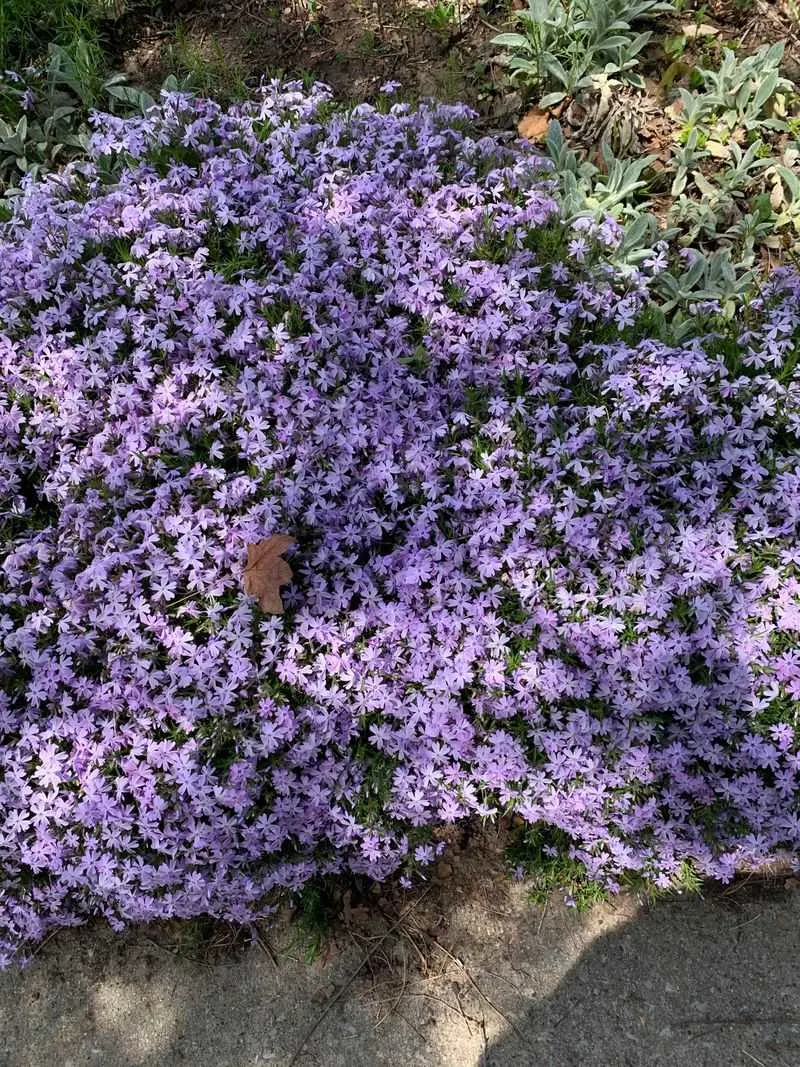
Wild phlox is a fragrant tapestry, its clusters of pink and purple blooms a sweet-scented symphony.
This wildflower thrives in woodland edges and open fields, needing little more than sunshine and space to flourish. In the language of flowers, phlox symbolizes harmony and sweet dreams, its scent a soothing balm for the soul.
Growing wild phlox is like planting a fragrant embrace, where every petal whispers of tranquility and unity, turning gardens into havens of peace and beauty.
Columbine
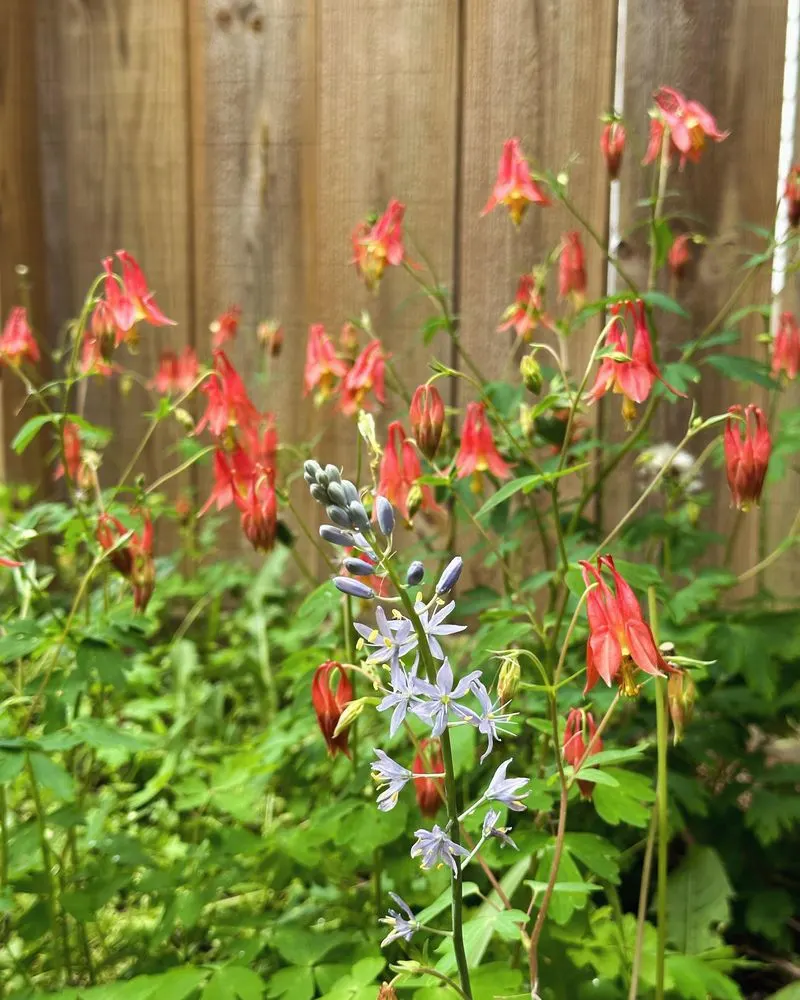
Columbine’s flowers are nature’s origami, their intricate spurred petals a marvel of evolutionary artistry.
Thriving in rocky woodlands, this wildflower embodies the spirit of adventure and resilience. It’s a symbol of endurance, known for its ability to flourish in challenging environments.
Historically, columbine was used in ceremonies for its believed protective properties. Cultivating columbine is like inviting a wild dance into your garden, where every bloom is a testament to nature’s creative ingenuity.
Wild Geranium
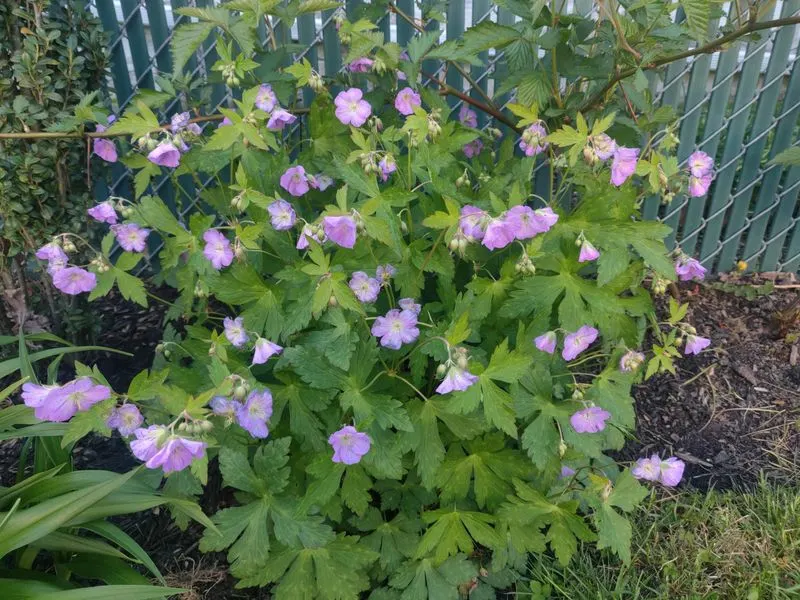
Wild geraniums are the woodland gems, their pink flowers a delicate contrast to vibrant green leaves.
They thrive in shaded areas, requiring minimal care and offering blooms that symbolize gentleness and peace. Historically, they were used in herbal remedies, their roots possessing astringent properties.
Growing wild geraniums is like nurturing a slice of serene forest, where every flower whispers tales of ancient woodlands, inviting tranquility and subtle beauty into your garden.
Wild Violets
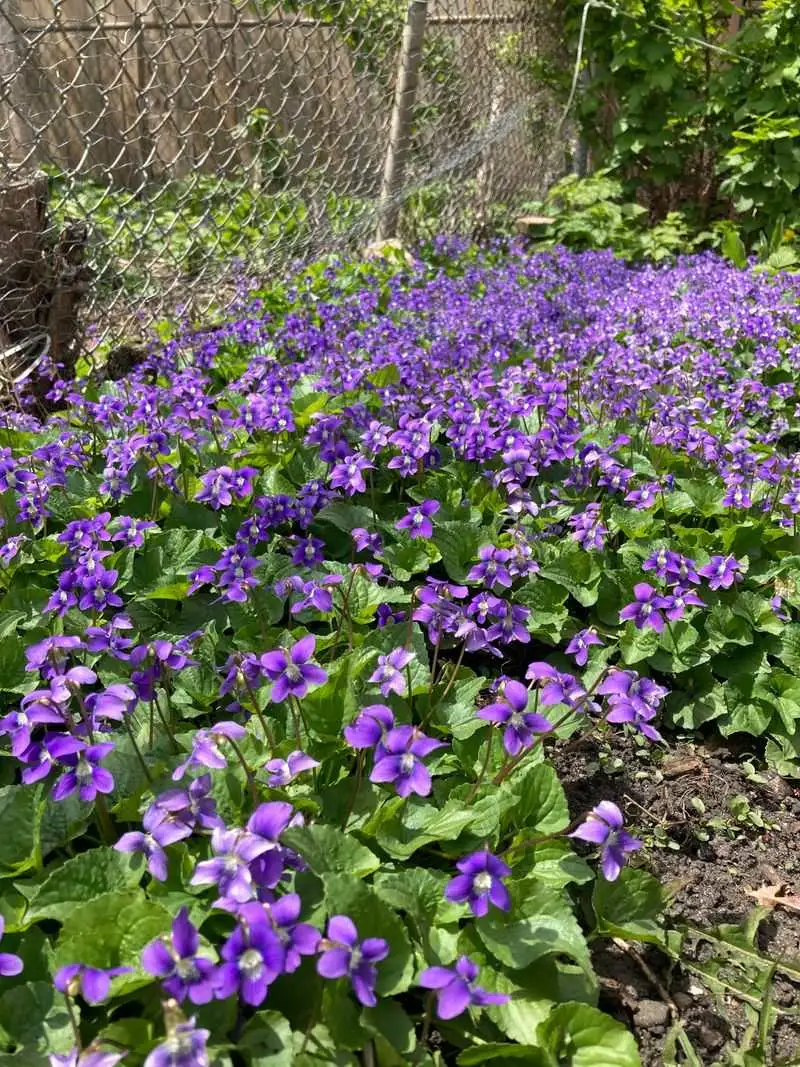
Wild violets, with their heart-shaped leaves and delicate purple blooms, are the subtle whispers of the forest.
These wildflowers thrive in shaded, moist environments, spreading joy with little care. Historically, violets symbolize modesty and faithfulness, their blooms a gentle reminder of nature’s quiet wonders.
Growing wild violets is like planting a carpet of serenity, where each flower is a note in nature’s soft lullaby, turning gardens into peaceful retreats filled with understated elegance.
Joe-Pye Weed
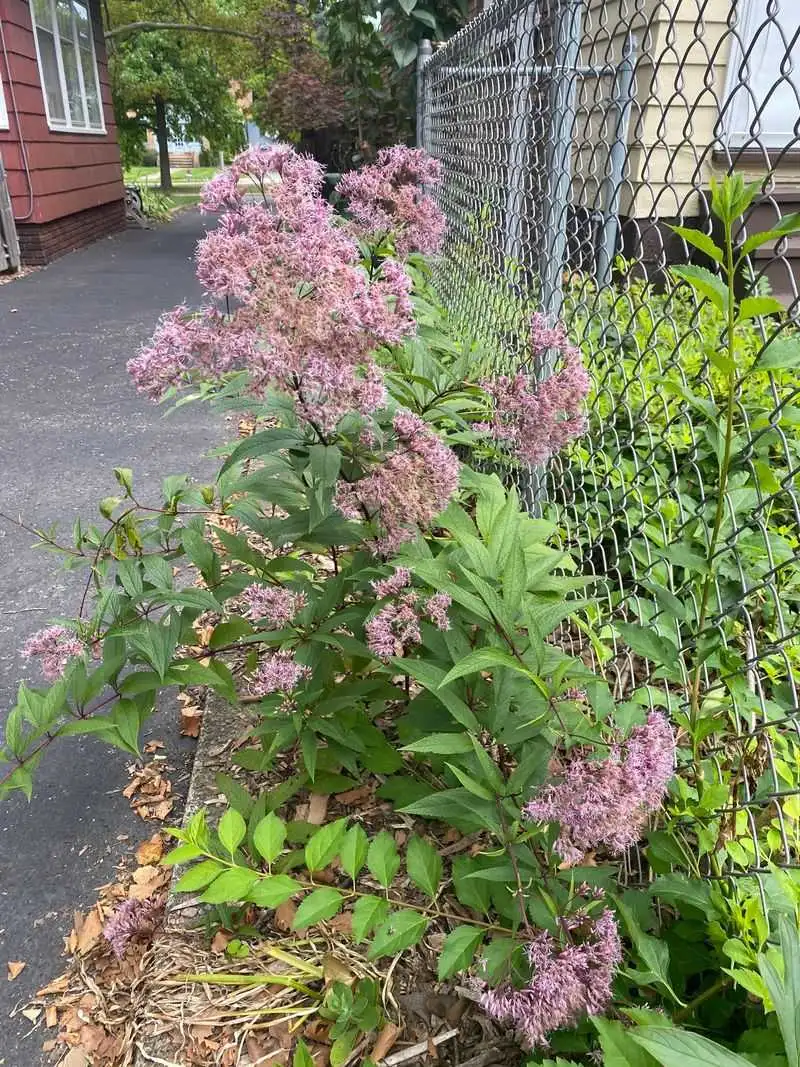
Joe-Pye weed is the giant of the wetlands, its towering stems crowned with clusters of pink-purple blooms.
This wildflower thrives in moist conditions, drawing in butterflies like a magnet. Historically, it was used by Native Americans for its believed medicinal properties, particularly in fevers.
A symbol of health and healing, Joe-Pye weed brings vertical interest to gardens, where every flower cluster is a celebration of nature’s abundance and vitality.
Wild Rose
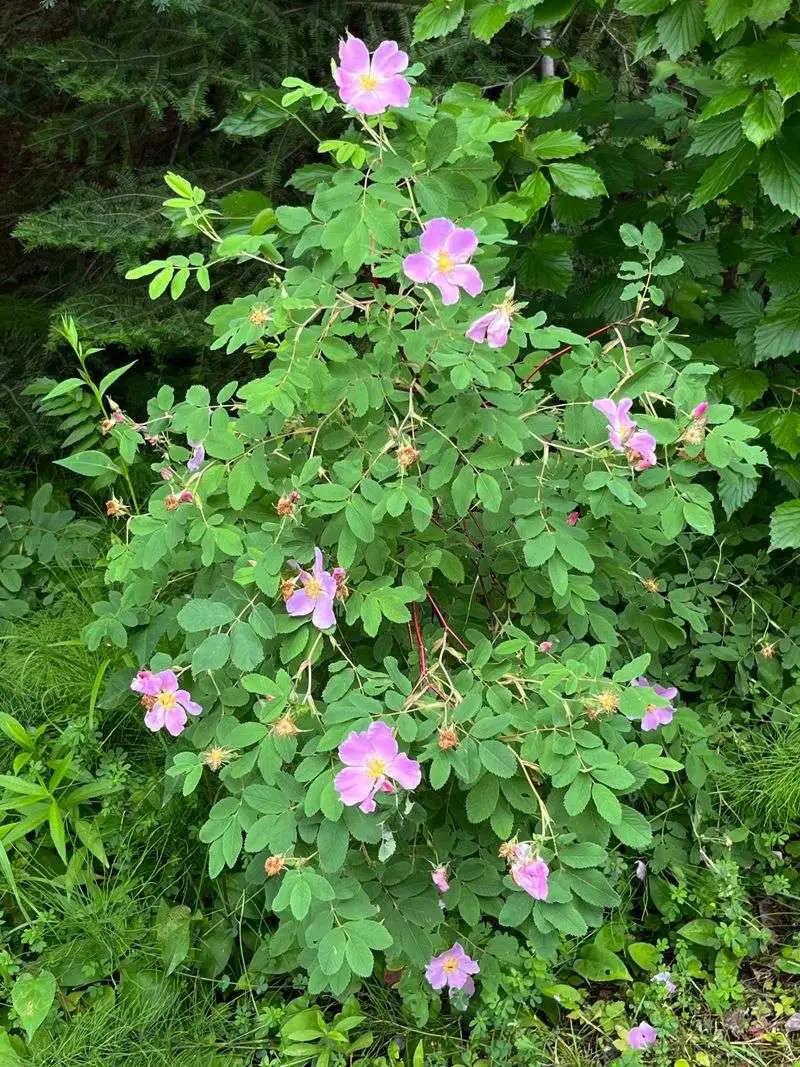
Wild roses are the rugged romantics of the plant world, their pink blooms a stark contrast to thorny stems.
These wildflowers thrive in diverse environments, embodying resilience and love. Historically, wild roses were symbols of passion and devotion, their petals used in perfumes and medicines.
Growing wild roses is like nurturing a piece of untamed romance, where every flower is a testament to enduring beauty, and every thorn a reminder of nature’s fierce protection.
Goldenrod
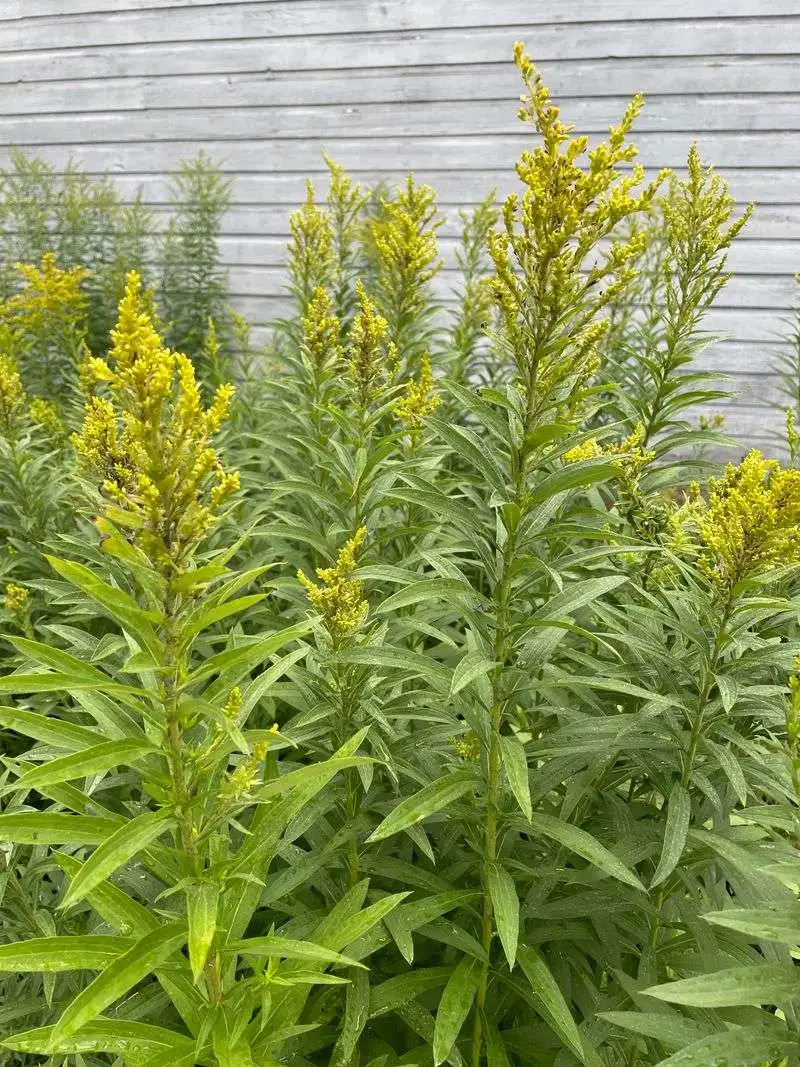
Goldenrod is nature’s golden torch, its bright yellow plumes lighting up fields and meadows.
These wildflowers thrive in open areas, requiring minimal care. Historically, goldenrod was used in herbal teas and remedies, symbolizing encouragement and good fortune.
Growing goldenrod is like planting beams of sunshine, where every bloom is a vibrant promise of warmer days and bountiful nature, turning gardens into shimmering seas of gold.
Milkweed
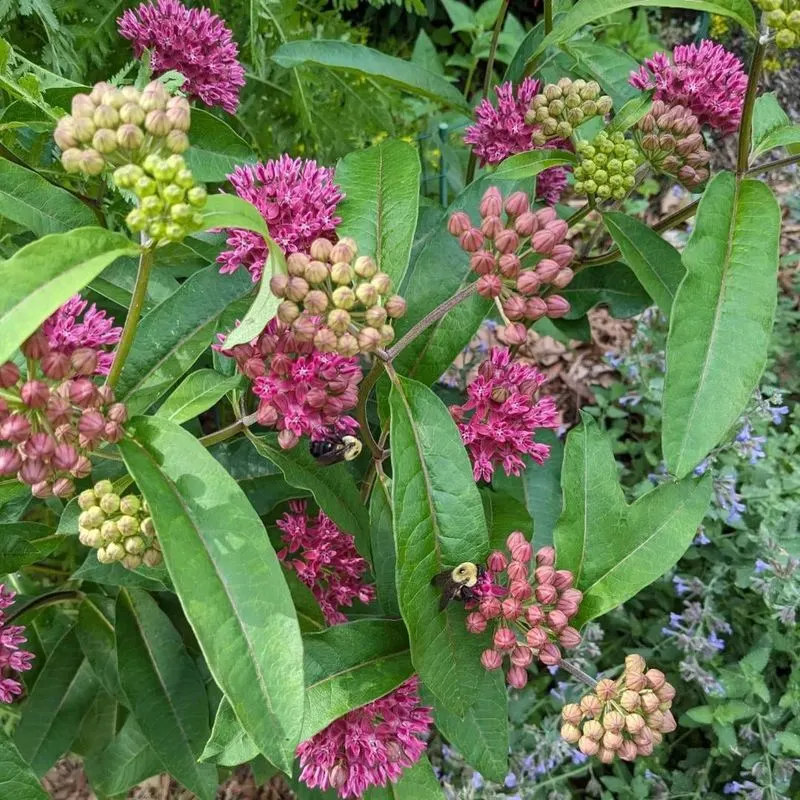
Milkweed is the monarch’s lifeline, its leaves a crucial food source for caterpillars.
This wildflower thrives in open fields, spreading easily with its silky seeds. Historically, milkweed was used by Native Americans for its fibers and medicinal properties, symbolizing transformation and resilience.
Growing milkweed is like opening a portal to a butterfly sanctuary, where every plant is a step in the dance of life, inviting delicate wings and vibrant transformations into your garden.
Asters
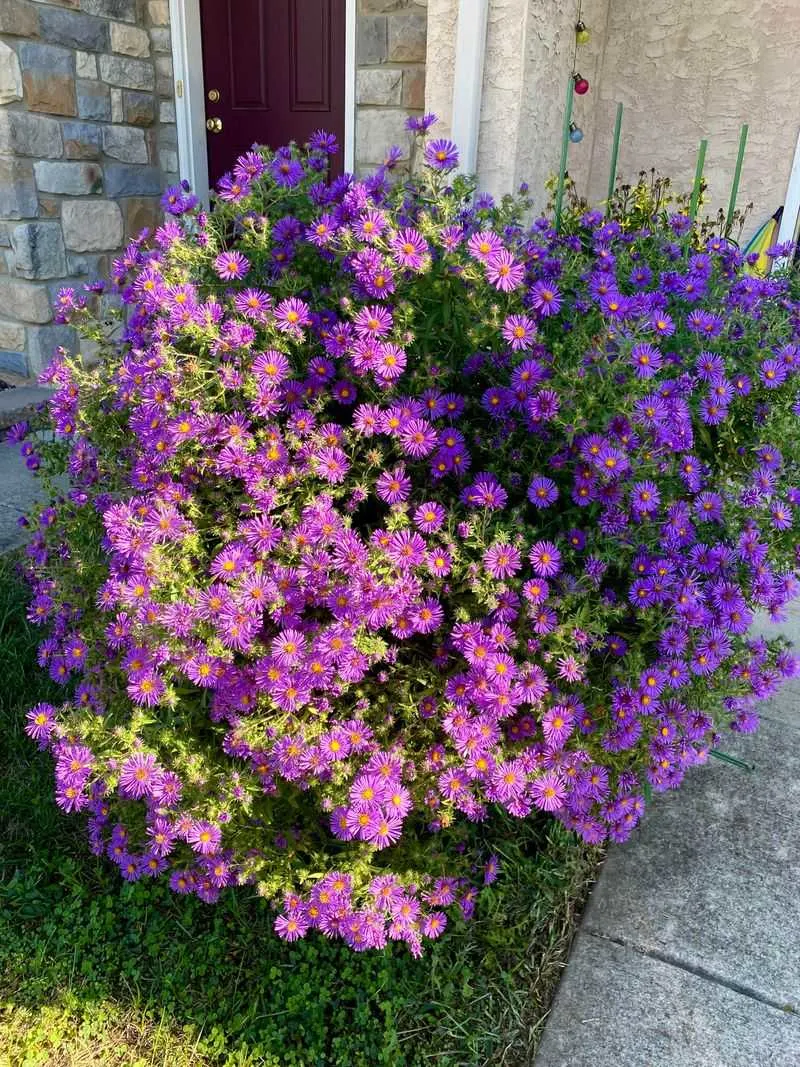
Asters are the late bloomers, their star-shaped flowers a final burst of color in the fading light of autumn.
These wildflowers thrive in various conditions, from meadows to woodland edges. Symbolizing patience and elegance, asters are a testament to enduring beauty.
Growing asters is like extending the garden’s life, where every bloom is a star in nature’s twilight symphony, offering a lasting legacy of color and grace.
Wild Columbine
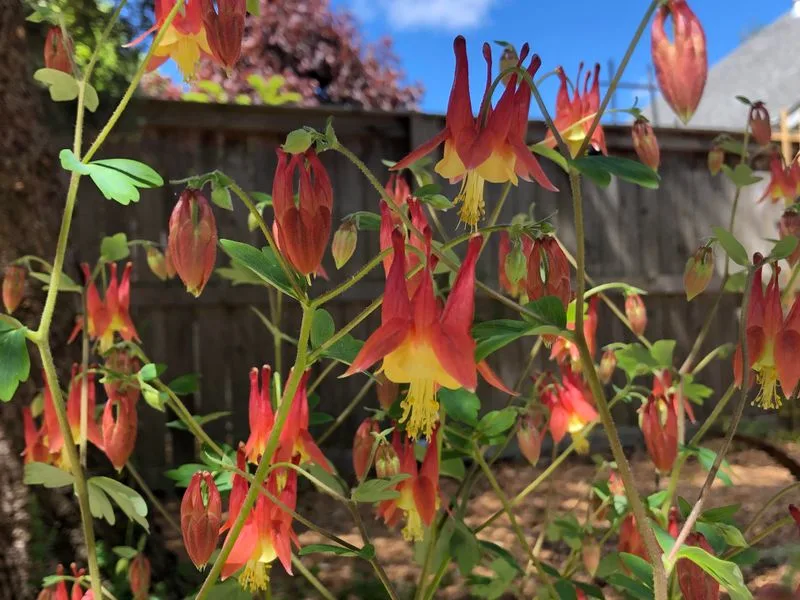
Wild columbine is the acrobat of the plant world, its red and yellow flowers a daring display of balance and grace.
Thriving in rocky outcrops, this wildflower is a symbol of courage and resilience, its blooms defying the harshest of conditions. Historically, it was used in Native American rituals for its believed spiritual properties.
Growing wild columbine is like planting a piece of natural art, where every flower is a dance in the wind, a celebration of nature’s resilience.
Firewheel
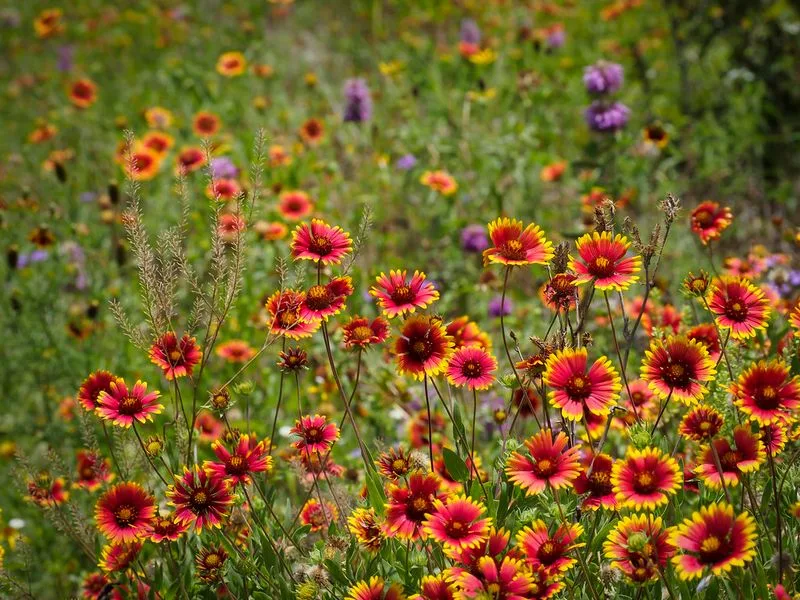
Firewheel bursts into bloom like a painted sunset, its red and yellow petals a blaze of color in open fields.
This wildflower thrives in sunny, well-drained environments, demanding little care. A symbol of passion and perseverance, firewheel adds a touch of fiery elegance to gardens.
Growing firewheel is like painting a canvas of vibrant hues, where every blossom is a flame in nature’s palette, igniting passion and beauty with each petal.
Ironweed
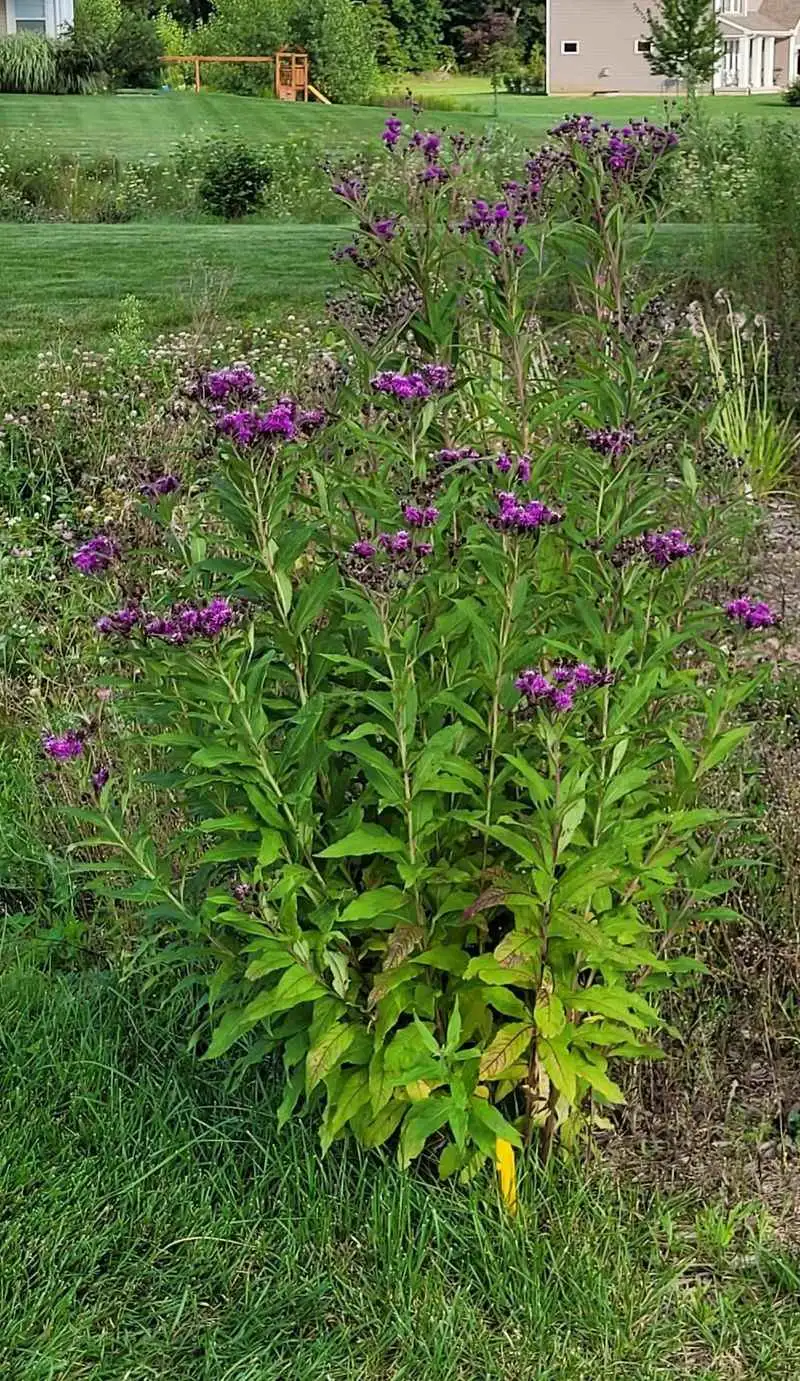
Ironweed stands tall and formidable, its purple flowers a testament to strength against the backdrop of late summer.
This wildflower thrives in moist fields, requiring minimal maintenance. Historically, ironweed was used in traditional remedies, symbolizing endurance and determination.
Growing ironweed is like planting a bastion of natural beauty, where every bloom is a bold statement of resilience, adding vertical drama to gardens and inviting pollinators in a stately dance.
Cardinal Flower
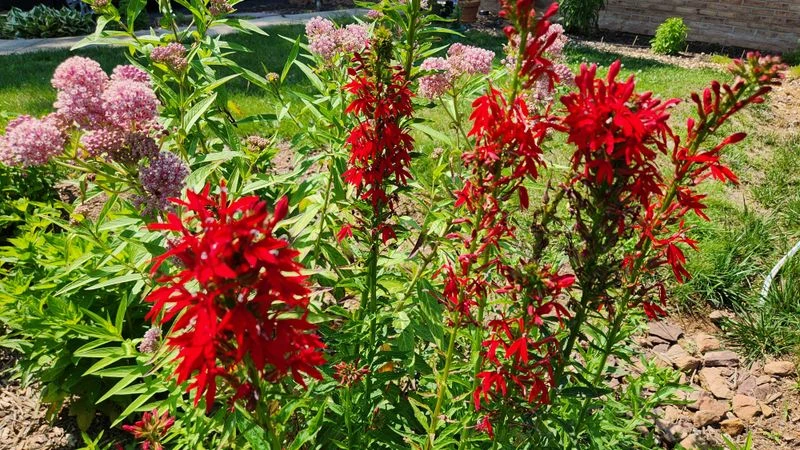
Cardinal flowers are the sirens of the wetlands, their red blooms a striking call to hummingbirds.
This wildflower flourishes in moist conditions, adding a splash of bold color to gardens. Historically, it was used by Native Americans for its medicinal properties, symbolizing distinctiveness and vitality.
Growing cardinal flowers is like inviting a lively orchestra into your garden, where each bloom is a note in nature’s vibrant melody, attracting life with its fiery allure.
Prairie Smoke
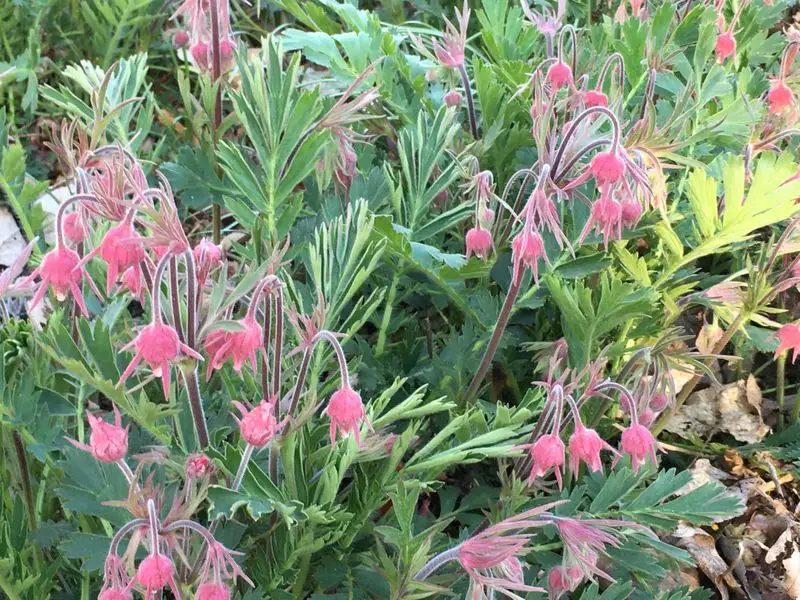
Prairie smoke is nature’s whisper, its wispy pink plumes like smoke drifting across open meadows.
This wildflower thrives in well-drained soils, requiring little attention. A symbol of mystery and transformation, prairie smoke adds a dreamlike quality to landscapes.
Growing prairie smoke is like capturing a fleeting breath of elegance, where every plume is a wisp in nature’s ethereal dance, turning gardens into realms of soft beauty and subtle intrigue.

